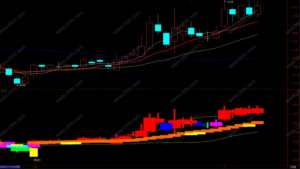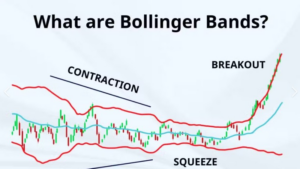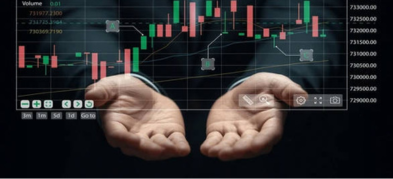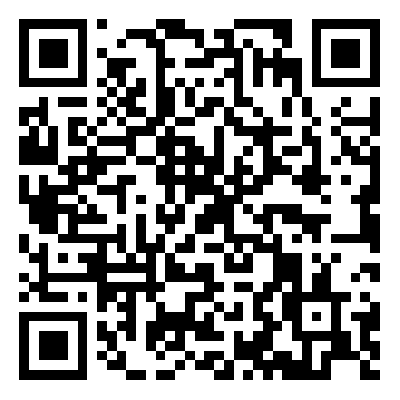
Ultima Markets App
Trade Anytime, Anywhere
Important Information
This website is managed by Ultima Markets’ international entities, and it’s important to emphasise that they are not subject to regulation by the FCA in the UK. Therefore, you must understand that you will not have the FCA’s protection when investing through this website – for example:
- You will not be guaranteed Negative Balance Protection
- You will not be protected by FCA’s leverage restrictions
- You will not have the right to settle disputes via the Financial Ombudsman Service (FOS)
- You will not be protected by Financial Services Compensation Scheme (FSCS)
- Any monies deposited will not be afforded the protection required under the FCA Client Assets Sourcebook. The level of protection for your funds will be determined by the regulations of the relevant local regulator.
Note: Ultima Markets is currently developing a dedicated website for UK clients and expects to onboard UK clients under FCA regulations in 2026.
If you would like to proceed and visit this website, you acknowledge and confirm the following:
- 1.The website is owned by Ultima Markets’ international entities and not by Ultima Markets UK Ltd, which is regulated by the FCA.
- 2.Ultima Markets Limited, or any of the Ultima Markets international entities, are neither based in the UK nor licensed by the FCA.
- 3.You are accessing the website at your own initiative and have not been solicited by Ultima Markets Limited in any way.
- 4.Investing through this website does not grant you the protections provided by the FCA.
- 5.Should you choose to invest through this website or with any of the international Ultima Markets entities, you will be subject to the rules and regulations of the relevant international regulatory authorities, not the FCA.
Ultima Markets wants to make it clear that we are duly licensed and authorised to offer the services and financial derivative products listed on our website. Individuals accessing this website and registering a trading account do so entirely of their own volition and without prior solicitation.
By confirming your decision to proceed with entering the website, you hereby affirm that this decision was solely initiated by you, and no solicitation has been made by any Ultima Markets entity.
I confirm my intention to proceed and enter this website Please direct me to the website operated by Ultima Markets , regulated by the FCA in the United KingdomHow to Use Bollinger Bands for Trading
What Are Bollinger Bands?
Bollinger Bands is a widely used technical analysis tool among global traders, developed by John Bollinger in the early 1980s. It consists of a moving average line along with two standard deviation lines above and below, creating a price channel that fluctuates with market volatility. This helps traders understand how to use Bollinger Bands to determine the range of price movements and identify potential reversal points.
Bollinger Bands dynamically reflect market volatility. When market volatility increases, the channel expands; when volatility contracts, the channel narrows. This makes it a crucial tool for timing entry and exit points in forex, gold, oil, and other commodity trading.
For instance, in the EUR/USD trading pair provided by Ultima Markets, historical data shows that when the Bollinger Bands narrow significantly before the release of non-farm payroll data, it is often followed by sharp volatility of more than 75 points, providing excellent arbitrage opportunities for short-term traders.

How to Adjust Bollinger Bands Settings?
Learn how to adjust Bollinger Bands by mastering these 3 core parameters:
1. Moving Average (Middle Band)
The default setting is typically a 20-day simple moving average (SMA), which reflects the short-term trend of the price. Traders can adjust this according to their trading cycle, such as using a 10-day or 30-day moving average to suit different trading strategies.
2. Upper and Lower Bands
The standard setting usually places the upper and lower bands at two standard deviations above and below the middle band. This setup aims to contain most price fluctuations (approximately 95%) within the channel. Depending on market volatility or individual preferences, some traders may adjust the bands to 1.5 or 2.5 standard deviations.
3. Standard Deviation
The essence of Bollinger Bands lies in the standard deviation. The larger the standard deviation, the wider the channel, indicating increased volatility; when the standard deviation contracts, the channel narrows, signaling that the market may be about to experience a breakout.
Adjusting the standard deviation settings can help optimize how to use Bollinger Bands for specific assets, such as forex, gold, or oil.
Bollinger Bands standard deviation calculation:
σ = √[Σ(Close Price – 20-day Average)² / 20]
When the σ value breaks above the three-month average by 15%, it often indicates a change in volatility.
What Are Bollinger Bands Trading Strategies? Master These Techniques
1. Channel Convergence Breakout Strategy
When Bollinger Bands contract unusually, it often signals that the market is about to experience high volatility. Learning how to use Bollinger Bands for breakouts is one of the most powerful strategies. Whether it breaks through the upper or lower band, it can trigger a trend. In such cases, combining trading volume observation can help capture breakout points.
Ultima Markets’ Q1 2024 trading report pointed out that traders using the channel convergence breakout strategy for gold (XAU/USD) saw an average single trade return increase of 12%, particularly during major economic events.
2. Channel Reversal Strategy
If the price touches the upper band and a reversal signal occurs (e.g., a long upper shadow), it may indicate an overbought pullback. If the price touches the lower band and there’s a reversal with a lower shadow, it may be an opportunity for a rebound from an oversold condition. This strategy is ideal for range-bound traders.
3. Bollinger Bands Combined with Other Technical Indicators
Although using Bollinger Bands alone is effective, combining them with other indicators like MACD or RSI for dual confirmation can greatly reduce the risk of false signals. For instance, when the price touches the lower band and the RSI shows oversold conditions, it might be a high-probability buy point.

Common Bollinger Bands Misconceptions
1. Treating Every Touch of the Band as an Entry or Exit Signal
Bollinger Bands reflect the volatility range, not absolute support or resistance levels. When the price touches the upper or lower band, it should be combined with the trend direction and other indicators for judgment, rather than relying on mechanical trading.
2. Ignoring Trend Background
Bollinger Bands will continue to run along the bands in a trending market. For example, in a strong bullish market, prices may stay near the upper band for a long time. Therefore, entering based solely on band touches can lead to frequent stop losses in a trending market.
3. Incorrect Parameter Adjustments
Markets and assets like forex, gold, and oil have unique characteristics and volatilities. When learning how to use Bollinger Bands, it’s important to adjust the parameters based on the asset you are trading. Default values might not always work in every situation. Adjusting these values for specific markets is key to effectively using Bollinger Bands in different trading scenarios
Practical Applications of Bollinger Bands in Forex, Gold, and Oil Trading
1. Forex Market
The forex market is highly liquid and volatile, making Bollinger Bands an ideal tool to capture short-term breakouts or range-bound trends. For example, when the EUR/USD exchange rate contracts significantly within the Bollinger Bands, it often signals that a sharp move is imminent.
2. Gold Trading
Gold, being a safe-haven asset, often experiences sharp price movements. Using Bollinger Bands with sensitive standard deviation parameters allows traders to detect when prices deviate from the normal range, helping them deploy strategies early.
It is worth noting that on the Ultima Markets platform, gold trading saw daily price movements exceeding 1% about 35 times in the past year, making the use of Bollinger Bands to capture short-term swings a viable strategy.
3. Crude Oil Futures
Crude oil experiences extreme volatility due to supply-demand changes and geopolitical factors. By using Bollinger Bands to monitor the interaction between prices and the upper and lower bands, and combining it with volume changes, traders can better identify trend reversal points.

How to Start Using Bollinger Bands?
- Beginners are advised to start practicing with a demo account to familiarize themselves with the indicator’s characteristics without pressure.
- Once comfortable with the operation and strategy validation, consider opening a trading account to test your trading system in the live market.
FAQ
Q1: What type of traders is Bollinger Bands suitable for?
A: Bollinger Bands are suitable for both short-term traders to capture volatility and long-term traders to observe market structure changes. Simply adjust the parameters according to the different strategies used.
Q2: Can Bollinger Bands be used as the sole basis for opening positions?
A: It’s recommended to combine Bollinger Bands with other indicators like MACD or RSI for confirmation, reducing the risk of false breakouts or reversals.
Q3: When are Bollinger Bands likely to fail?
A: When the market has no clear trend and is in extreme consolidation, the Bollinger Bands signals may often result in false breakouts. It is important to increase risk management awareness or temporarily avoid trading.
Bollinger Bands: A Practical Trading Companion
With its simple and clear design, Bollinger Bands have become an indispensable tool in forex and commodity trading. Whether you’re a beginner or an experienced trader, mastering Bollinger Bands settings and applications, and combining them with your personal trading style and risk management plan, will help you truly unlock their potential.
Want to quickly experience the practical charm of Bollinger Bands? Take action now and gain more control over your trades through Ultima Markets.
| Open a real account |












